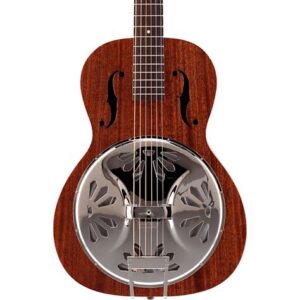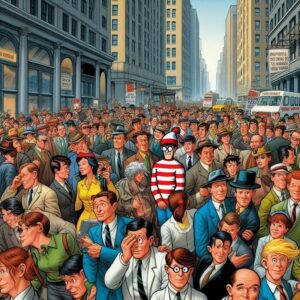
For the first few weeks of the pandemic, we were advised by CDC and WHO not to wear masks unless we were sick. The masks, they said, were for health care workers, and would not protect us or others against COVID-19. Social media was awash with expressions of anger and outrage at the selfish, inconsiderate, cruel people whose effrontery venturing outside wearing masks showed their indifference to others’ suffering.
Then, a New York Times op-ed changed the regulatory course of the pandemic. The CDC and WHO changed course, now advising people to wear masks whether or not they were sick themselves. Part of this involved the gradual realization about asymptomatic carriers and the infection cycle. Overnight, we all sewed masks. Because the N-95 masks many of us have from the great fires in California were reportedly scarce, even if we had used ones at home, we did not dare wear them in public for fear that others would (mistakenly) judge and scold us for taking these precious commodities away from frontline workers. And, predictably, social media was awash with expressions of anger and outrage at the selfish, inconsiderate, cruel people whose effrontery venturing outside WITHOUT wearing masks showed their indifference to others’ suffering.
Notice how quickly we pivoted from raging at our friends and neighbors for doing something to raging at them for doing exactly the opposite?
We still do not know nearly enough about COVID-19, its infection patterns, and the appropriate public policy measures that would undoubtedly reduce the contagion. But reading your local social media outlet, you could be forgiven for thinking that a lot of us seem very resolute in our opinions. Everywhere we go, we scrutinize our fellow humans with eyes freshly attuned to mask violations, outdoor exercise choices, and sidewalk etiquette–and if we don’t confront them directly, we go home and unleash our frustrations on the keyboard. I cracked up reading a tweet evoking the hysteria of Arthur Miller’s The Crucible: “I saw Goody Proctor shopping without a mask at CVS.”
Our voracious appetite for criticizing others and telling them off publicly is undeterred by the fact that, for a lot of the choices we have to make every day, we don’t actually know what to do. A few days ago, a probably well-meaning neighbor accosted my partner (who was wearing a mask) in the street and scolded him for not having our toddle wear a mask (children 3-12 are exempt from masks under the San Francisco ordinance, and children 2 and under are required not to wear masks because of the risk of suffocation. My son is 2.5 years old.) A friend posted a week ago of being told off by a stranger about bringing her sons to the grocery store and having them stand on a sidewalk–she honestly did not think it was a good idea to have them set foot inside the store.
Much of the confusion is due to the fact that, in public policy, there are often big trade-offs. Just as one example, ordering a delivery from your neighborhood restaurant keeps a small business afloat–crucially important, because we might not recognize our city when this is over–but it also endangers the delivery workers who bring the food to you. We all agonize over these decisions, but the agonizing, doubting, and reflection, seem to happen much more privately than the scolding and the shaming. I had a big belly laugh of empathy when I read this fantastic piece on Corporette. You should read the whole thing, but just to whet your appetite:
Actually she never leaves her house because she only orders groceries by contactless delivery. She tips generously so it’s ok for the delivery person to be at risk.
Until she’s overcome with guilt from having someone deliver her groceries so she decides to pick them up herself. At the grocery store, she shops alone. Never with children. She has a husband who watches them. Or if she doesn’t have a husband she utilizes an elaborately and meticulously researched system to ensure her children never go out in public. She shops from a list, with haste and with gloves and a mask. She has backup items for each item on her list in case the store is out. She has backup items for her backup items. She would never complain about a shortage because her planning has made any shortage impossible to affect her. The mask is naturally homemade because any surgical or N95 masks she has she donated to the local hospital last month, obviously. She hasn’t touched her face in years.
The Ideal COVID-19 Quarantine Woman, Corporette
Along the same lines, I got a wry chuckle or twenty out of reading Dave Eggers’ excellent piece in the New York Times. Again, read the whole thing, but this should give you an idea:
P: Where should we go for a run?
A: Ideally some place where you can spread out, where you aren’t in close proximity to other people.
P: Like the beach? A park?
A: Sure. Beaches and parks are wide-open spaces. They’re about as safe as you can be.
P: We just went to the beach and the park. There were hundreds of other people there.
A: You went to the beach? The park? What were you thinking? There are hundreds of people there! Go home. Be with your kids. Do you have kids?
P: Yes.
A: Well, make sure they keep up with school. Keep up with their worksheets and Zoom, and check their work, and keep them off screens, and go outside, and don’t worry about school. It’s a pandemic, after all.
P: Um. Many of the things you just said sound contradictory.
A: Not at all. I’ll rephrase: Your kids are living through a crisis. It’s all right if they feel anxious, or if you can’t maintain routines or keep up with regular school schedules. Just make sure they don’t fall behind, and remember that kids thrive on routine. So stick to a schedule, but give them space, and stay inside, and go outside, and use technology to connect with teachers and friends, and limit screen time.
There is nothing wrong with staying informed and trying to do our best. But when we become overly attached to our beliefs and opinions, our rigid grasp of them can stop us from examining the possibility that we might be wrong. This increases the suffering of others whom we judge, scold and humiliate, often publicly. Especially now, as the world quiets and slows down, an unkind word from you can ring in someone’s ears for days–and, contrary to what some of us think, shaming is not an effective strategy for incentivizing people to change their behavior. Moreover, scolding increases our own suffering, because feeling full to the brim with the fire and brimstone of self righteousness provokes upheaval and preoccupations that exacerbate our already turbulent internal experiences of this crisis.
Friends, we are not Bad People (TM) for doing this. The last thing I want to do is scold you for scolding others–that just compounds the problem! It is understandable and human for the inchoate fear and confusion that we feel these days to incessantly look for a “hook” to hang to. Tibetan Buddhists talk about this as shenpa. Pema Chödrön, with her usual crystalline quality, offers a description of this quality of being “hooked”:
At the subtlest level, we feel a tightening, a tensing, a sense of closing down. Then we feel a sense of withdrawing, not wanting to be where we are. That’s the hooked quality. That tight feeling has the power to hook us into self-denigration, blame, anger, jealousy and other emotions which lead to words and actions that end up poisoning us.
Remember the fairy tale in which toads hop out of the princess’s mouth whenever she starts to say mean words? That’s how being hooked can feel. Yet we don’t stop—we can’t stop—because we’re in the habit of associating whatever we’re doing with relief from our own discomfort. This is the shenpa syndrome. The word “attachment” doesn’t quite translate what’s happening. It’s a quality of experience that’s not easy to describe but which everyone knows well. Shenpa is usually involuntary and it gets right to the root of why we suffer.
One way to work with rigidly held beliefs is to create a quiet, safe space for yourself to investigate and question them with curiosity and kindness. I find that Byron Katie’s The Work, and especially her Judge Thy Neighbor Worksheet, can be helpful here. I confess to having some ambivalence about the way Katie works with people at her seminars, especially after having seen some videos; the spectacle is not tempered with enough compassion for my taste, and I also worry that shaming people publicly for rigidly held beliefs replicates and compounds the judgment embroiled in their own beliefs. But as a tool of personal exploration, it can be a useful way to soften your grip around what you strongly believe is “right”, consider the possibility that there is a broader context, and play with some turnarounds to learn more about yourself and others.
As I understand it, engaging in this kind of exploration is not intended to numb you to the ills of racism, social inequality, environmental destruction, or interpersonal cruelty. Accepting that something is as it is is not tantamount to burying our head in the sand and pretending that everything is fine. It does, however, offer you an opportunity to view your adversaries in a new light. Joanna Macy’s Work That Reconnects, which is infused with tireless advocacy for environmental justice, includes a fantastic exercise called Bowing to my Adversaries:
You, who destroy the natural world for profit, you show me how much I respect and honor our planet home and fellow beings. So I bow to you in gratitude and touch the Earth.
You bring forth in me the love I feel for this life-bearing land—its soil, air and waters—and for the community that rises in its defense. Because of the strength with which I resist your actions, I learn how strong my love really is. I bow to you in gratitude and touch the Earth.
Because the pain I feel when I witness the pain of the world is no less than your pain–you, who perpetuate destruction and cut yourselves off from the web of life—I bow to you in compassion and touch the Earth.
Because the pain of greed, alienation and fear is no less than the pain of sorrow for what is lost, I bow to you in compassion and touch the Earth.
For the power of my anger, arising from my passion for justice, I bow to you in gratitude and touch the Earth.
Because we all want to be happy, to feel intact and part of a single whole, for that shared longing, I bow to you in compassion and touch the Earth.
Because your actions challenge me to see the limits to my own understanding, they free me from holding my view as the only correct one. I bow to you in gratitude and touch the Earth.
You who teach me that the mind is a miracle, capable of manifesting as love, as greed, as fear, as clarity or delusion—you who show me what I myself am capable of when I am governed by fear and greed—O great awesome teachers, I bow to you in gratitude and touch the Earth.
Understanding that we all belong to the web of life, and with love in my heart, I bow to you and touch the Earth.
Give yourself the gift of letting go of the blame game; drop your case and invite in some fresh air and a broader perspective. It can bring new freedom into how you are in your own being and in the world. Take a moment to tenderly, kindly, question your rigidly-held beliefs, and reap the rewards of spacious awareness in your mind. Real courage lies in starting the revolution within ourselves.




No comment yet, add your voice below!